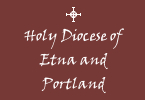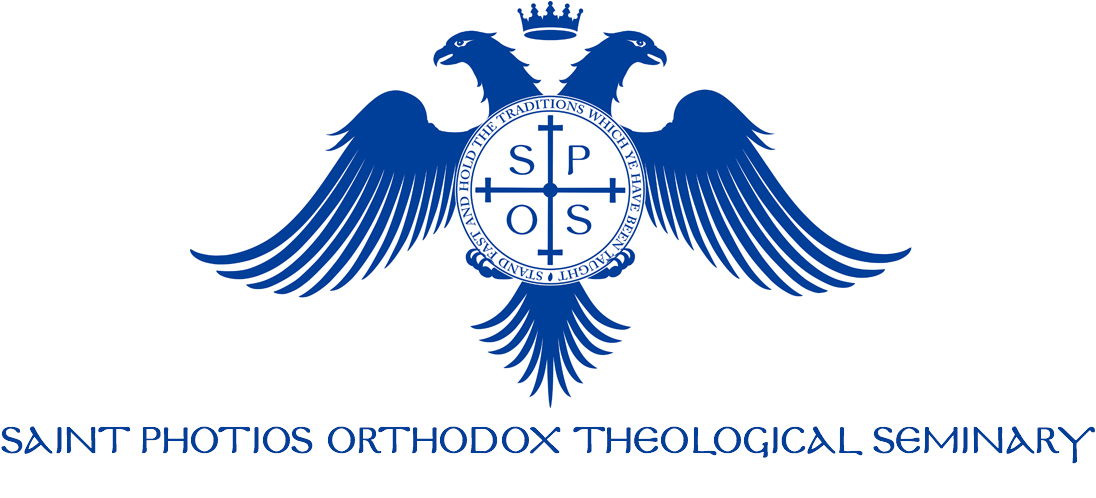Traditional Faith Perseveres
- Details
- Created on Wednesday, 29 September 2010 16:21
Jewel on the Side Streets of New York
On a quiet, tree-lined street in the Astoria district of New York City, the mysterious shapes of giant steel domes appear, piercing through the monotony of flat tarred roofs with their soft, round shapes evoking in the passer-by images of the Middle East and the glory that was Byzantium. The quiet greenery of that street belies its proximity to the hustle-bustle of the Manhattan skyscrapers just a “stone’s throw” across the river. The stillness is only broken by the occasional sound of an Amtrak train passing overhead on its aqueduct shaped bridge.
The Immigrant Foundations
Before reconstruction of the new building began, there stood a little house-church which had for 30- years served as home to a pious portion of the Greek Orthodox community. Like the Pilgrim Fathers in Massachusetts, these particular Greeks had come to America to find religious freedom in the face of fierce, often violent, persecution of their faith in Greece. Ironically, they are not members of a small sect. By a quirk of history the government of Greece, in 1924, outlawed the 2,000-year old traditional Orthodox church in favour of a modernized Greek Orthodox State Church. Anyone opposing the beliefs of the State Church was branded as “uncanonical,” and “schismatic” and—as the persecution reached a pitched fervour in the 1950’s—the traditionalists were condemned in the secular Greek press as “enemies of the Greek people. . .those who seek to shatter our ethnic unity.” Under the leadership of monks from Mount Athos the traditionalists, or “Old Calendarists” as they were labeled by the modernists, went underground in Greece until a recent revision of the law allowed them to publicly exercise their religious preference.
The First Priest
One such Athonite monk was sent to America to assist the emigrant believers. In 1952, Father Petros Astyfides, from St. Anne's Skete, settled in New York and began serving Divine Liturgy at the Old Calendarist Cathedral of St. Nicholas (near the WTC). In 1954 he started services for a small flock in a house-church on 26th Street in the Astoria district. He was latter joined by a deacon and some nuns from Greece who helped to establish a Greek school. With the passage of time, the small community was able to acquire several attached homes on the block which became a church, rectory, monastery, convent, and classrooms. The whole thing was named for a child-martyr, Saint Markella of the island of Chios.
Growth of a National Archdiocese
In other cities of the U.S. other traditionalist churches were coming into existence as well. Eventually Fr. Petros was ordained to the episcopate and became Bishop of Astoria. He was appointed “Exarch of America” by the Holy Synod in Greece to serve the traditionalist communities all over the country. The little house-church in Astoria had become a cathedral—de facto—and the national center of the traditionalist “Old Calendar” Greek Orthodox in America (the State Church also has its own headquarters in Manhattan.) On the national level the diocese continued to grow—churches and schools, a radio program in Florida, a TV program on Greek cable, newspapers—even a small convent on Long Island were established. At the same time, the congregation in Astoria was “bursting the walls” of the old cathedral, the diocesan offices were in the attic, the school in the basement.
Finally, necessity forced the issue. It was decided to build a new cathedral. The style, of course, had to be traditional. The building needed to be large, but the desire was to preserve the atmosphere which the small old church had had.
The Model: St. Saviour in Chora (Constantinople)
The inspiration for the design of the new cathedral was taken from the Church of the Saviour in Hora. This Byzantine church was originally built as monastery “in the Country-side” (Chora) just outside the walls of Constantinople. The Roman Emperor Constantine the Great had resolved to move the Imperial Capitol from Old Rome on the Tiber (with its pagan legacy chiseled on the walls of its temples) to a “New” Rome which he had built on the Bosporus. Constantine’s new city (Constantinople) was built throughout with Christian churches and monasteries. The Church in Chora was one of them.
Prayer Complicates Engineering
Prior to commencing the new church in New York, a daily cycle of services had been running without interruption for nearly thirty years. When construction began, it was decided that the services must not be halted. Thus, the project became complex for the engineers as they had to build the new church around, over, and under the old one. Only when the new building was capable of being used for services was the old structure demolished and removed from the interior of the new one.
Church Built By The Poor
The political strictures imposed upon the traditional believers in Greece led many to aceed to the will of the State Church, some for economic reasons, others for fear of consequences to their children. Thus it is that members of the traditional church are often from the lower economic strata. These are the people who built the new cathedral. The engineering complications caused the construction time and cost to double, so that the basic steel and cement structure cost over $2 million when finally completed. The iconography, carved veneration-stands, chandeliers, episcopal throne, carved chairs, standing candelabras, and interior finishing work and the rest of what constitutes a traditional “Byzantine” style Greek Orthodox Church ended up costing millions. But, to the average member of the Church, it is well worth it. “For my kid’s sake, I gotta do it” says one old woman in New York. “Hey, we’re in America now, a free country,” says a man in Detroit, “the cathedral is our national center—it has to be a symbol of our faith we can look to.” One priest in Chicago said, “The Cathedral is the mother church of our diocese. We hope that it will continue to be productive in the salvation of souls, so that—according to God’s will—her daughters (our parish churches) will prosper spiritually from her spiritual success.”
Fire Strikes
In July of 1995, when the Cathedral was nearly completed, the Cathedral suffered from a serious fire. The fire started in the altar and did much damage there though the clergy were able to get the Holy objects out of harm’s way. The iconostasis was completely destroyed and all the icons thereupon were seriously damaged or completely consumed by the flames and immense heat. No trace of several of them was ever found. A large brass free-standing candleabra was completely melted away, no trace of it was ever found.
After the firemen left, the clergy noticed that sitting face-up on the mass of burnt and water-damaged rubble was the icon of St. Markella. The icon was completely undamaged. The backing that the icon was mounted on was charred black though the icon itself and all the precious offerings hanging on it were untouched. The Old Calendar believers struggled to raise the funds to repair the Cathedral and today the results speak for themselves. There is a new carved iconostasis, a new marble floor, several new free-standing brass oil-lamp stands an immense polyeleos (Chandelier), and several smaller ones. There is a new carved episcopal throne, several carved veneration-stands, hundreds of carved chairs, and two new candle-selling stands (pangaria) and carved sand-boxes. The Cathedral is currently seeking donations to pay for these beautiful and traditional items.
Bishop Petros Reposes
In 1997, after struggling to preserve the Genuine Orthodox Faith for his entire life, Metropolitan Petros reposed in the Lord. Geronda Petros suffered greatly at the hands of the “official church” for his adherence to Genuine Greek Orthodoxy. He never wavered in his belief and confession of the Genuine Orthodox Faith. It is the same confession of the Holy Fathers and the same confession of all Old Calendarists.
In 1998 the Holy Synod of the Genuine Greek Orthodox Church of Greece elevated the Archdiocese of Astoria to the Holy Metropolis of North and South America. This was done in conjunction with the consecration of Archimandrite Pavlos of Astoria to the Episcopacy with the rank of Metropolitan of North and South America.
Orthodox Awareness
Refutation of an "Encyclical Sermon"
Refutation of an “Encyclical Sermon” by a Hierarch of the New Calendar Orthodox Church of Greece and a Wily Denigrator of Anti-Ecumenists and “Old Calendarists” Who Have Walled Themselves Off From His Church
by His Grace, Bishop Clement of Gardikion, Secretary of the Holy Synod
In Greek
In English
Missions
Saints Peter and Paul Orthodox Mission, Tucson, Arizona
Saints Peter and Paul Orthodox Church is a beautiful mission parish near downtown Tucson, a city in southern Arizona. It was started in 1997 by Father John Bockman, who was a missionary Priest formerly serving missions in Tennessee and Massachusetts since 1990. Father John served the faithful in Tucson and the surrounding area in his home Chapel until his repose in November of 2000. His wife, Presbytera Valerie, continued to make her home Chapel available for the mission, with clergy from Saint Nectarios Orthodox Church in Seattle and His Eminence, Metropolitan Moses of Toronto (then of Portland), visiting to provide the Divine Services.
Read more...Youth
2025 Youth Conference
Please join us for the 2025 youth conference in Toronto, Ontario, Canada! To learn more, visit the conference website.
Ask A Priest
Forty Day Memorial Service
Q. Can you please explain the significance of the forty day memorial service? An Evangelical family asked one of our relatives that question. We said that it’s best to ask a clergy member. Thank you in advance for your response. (We will forward it to them as soon as possible).
-P. & M. G.
Read more...





